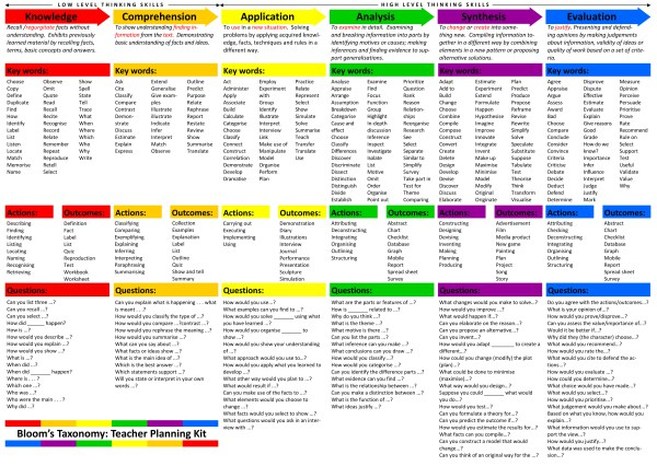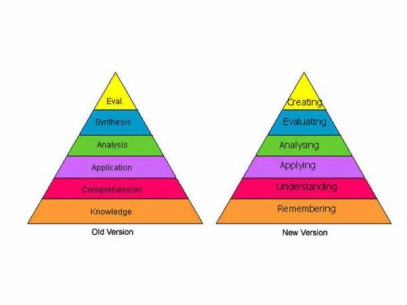DESCRIPTION OF GRAPHIC ORGANISER
This poster only shows seven verbs per segment when there is many more that could be added. By including just seven in each segment would make them easier to remember for children.
It is interesting to depict the verbs in a circular form as opposed to a hierarchical list, given that these skills don’t often occur in isolation and are interconnected.
This organiser is very child friendly and great for visual learners. An example for how you use this in a classroom would be linking it to the writing stages e.g. using the verbs when planing writing
"When we are planning our writing we are going to be thinking like what segment of our orange?.....If we are creating a piece of writing what things do we do, looking at our blooming orange poster? create, invent, compose, plan, design, imagine, construct.
This poster only shows seven verbs per segment when there is many more that could be added. By including just seven in each segment would make them easier to remember for children.
It is interesting to depict the verbs in a circular form as opposed to a hierarchical list, given that these skills don’t often occur in isolation and are interconnected.
This organiser is very child friendly and great for visual learners. An example for how you use this in a classroom would be linking it to the writing stages e.g. using the verbs when planing writing
"When we are planning our writing we are going to be thinking like what segment of our orange?.....If we are creating a piece of writing what things do we do, looking at our blooming orange poster? create, invent, compose, plan, design, imagine, construct.
Blooms Taxonomy Teacher Planning Kit

DESCRIPTION OF GRAPHIC ORGANISER
This TES Resource is a useful guide when writing learning outcomes or ‘success criteria’ for a session. It also provides a handy list of questions which could be used to check the learning taking place in the session.
Revised edition of Blooms for 21st Century learners

During the 1990′s, a former student of Bloom’s, Lorin Anderson updated the taxonomy to add relevance for 21st century students and teachers. Published in 2001, the revision includes several seemingly minor yet actually quite significant changes. . The changes occur in three broad categories: terminology, structure, and emphasis.
